
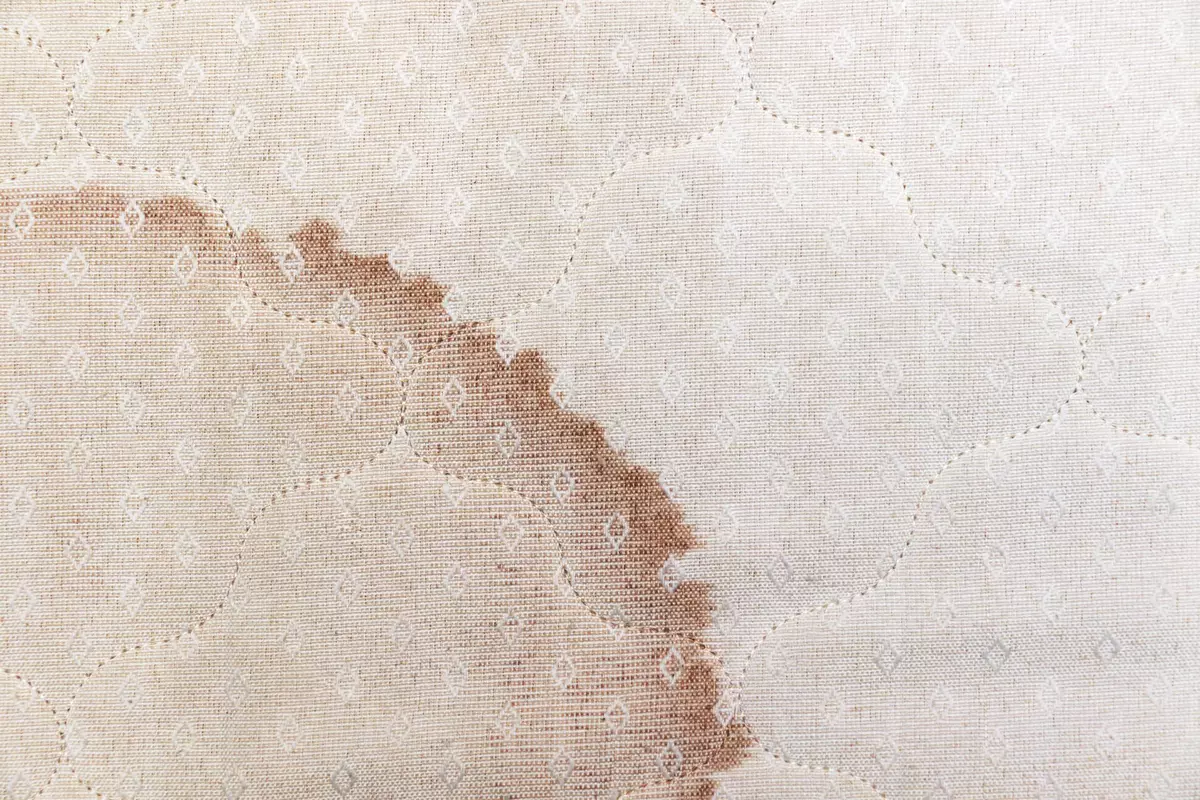
We’re going to make an assumption: you’re here because you’ve got a mattress that’s so deeply stained and foul-smelling that you’re 90% sure that the smart move would be to just throw it away. But that final 10% of your brain is telling you that maybe, just maybe, you can save it.
We’re right, aren’t we?
Well, you’re in the right place. Most of the time, we’re for the people who want to throw their mattresses away. But it’s much better for our planet if we can help you save yours for a few more years instead.
In this guide, you’ll learn everything you need to know about cleaning different types of mattresses with different types of stains. We’re going to cover:
Of course, we can’t make any guarantees. But if you do decide it’s got to go, let our mattress recycling service take care of it. We’ll keep your mattress out of landfills by safely stripping it down for raw materials to recycle.
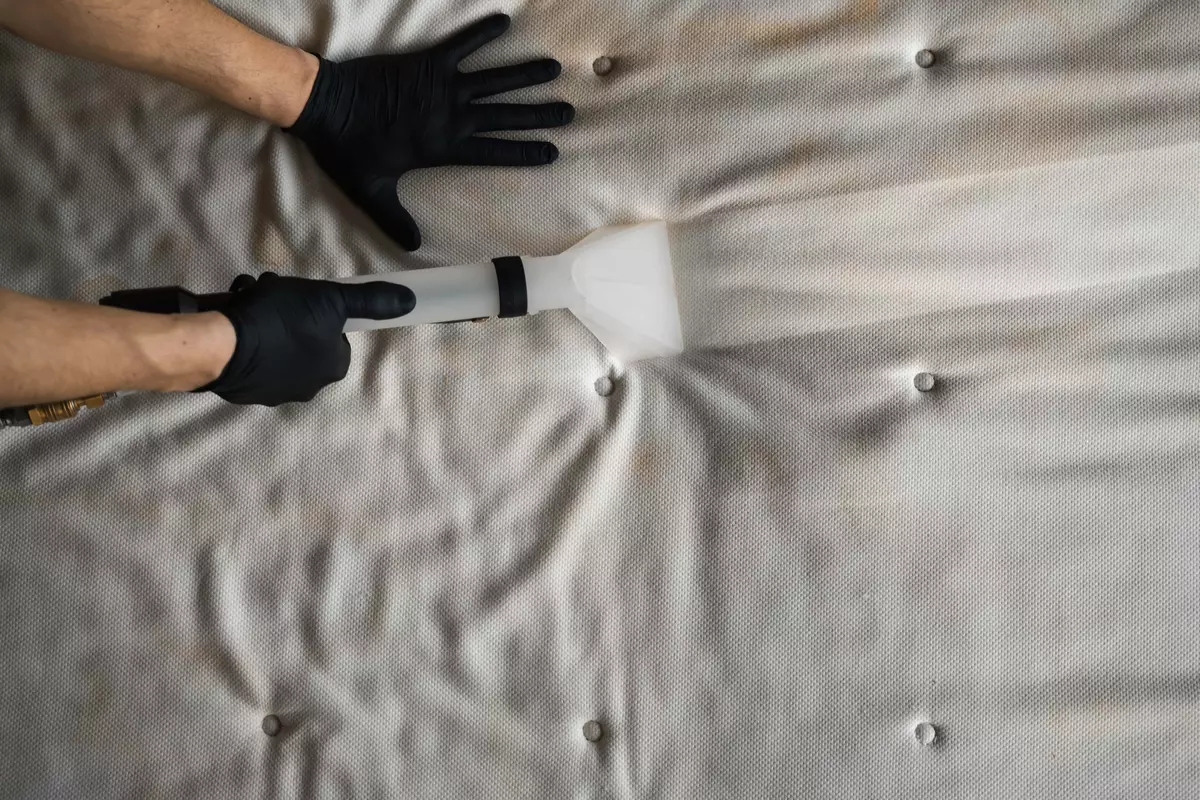
To tackle those tough stains and smells, gather these materials:
You can find these cleaning supplies at major stores across Melbourne, such as:
Pro tip: Practically every pet supply store will have everything you need to break down tough stains and remove foul odours from your mattress. In fact, their staff almost definitely have all kinds of tried and tested tips and tricks that’ll help you out.
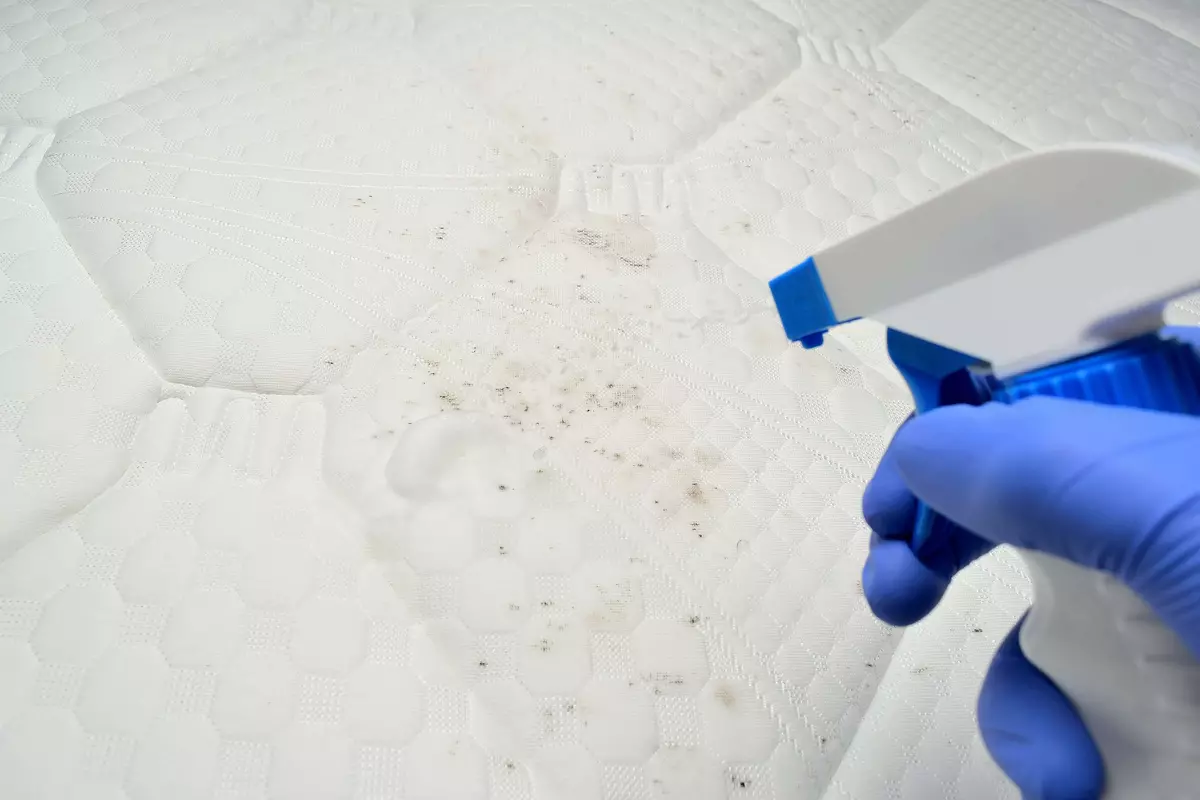
Strip off all sheets, mattress protectors, and any removable covers. Toss them in the wash using hot water and a skin-sensitive laundry detergent to kill dust mites and allergens. Make sure everything is thoroughly dried.
Grab your vacuum cleaner’s upholstery attachment and go over the entire surface, seams, and edges of the mattress. Tilt the mattress and vacuum the bed base, too. Regular vacuuming, ideally once a month, helps keep dust mites and other allergens at bay.
These methods should help you tackle the most common and stubborn mattress stains. If these methods don’t fully remove the stains, consider professional-grade cleaning products or services, or explore mattress recycling options if it’s beyond saving.
Sweat and drool stains are relatively common and can be treated with a simple solution:
Urine stains can be particularly challenging due to their strong odour and potential for setting in. Here’s how to handle them:
Blood stains require prompt action to prevent them from setting. Here’s an easy way to clean urine mattress stains:
Vomit stains are not only unsightly but can also cause lingering odours. Here’s a method to clean them effectively:
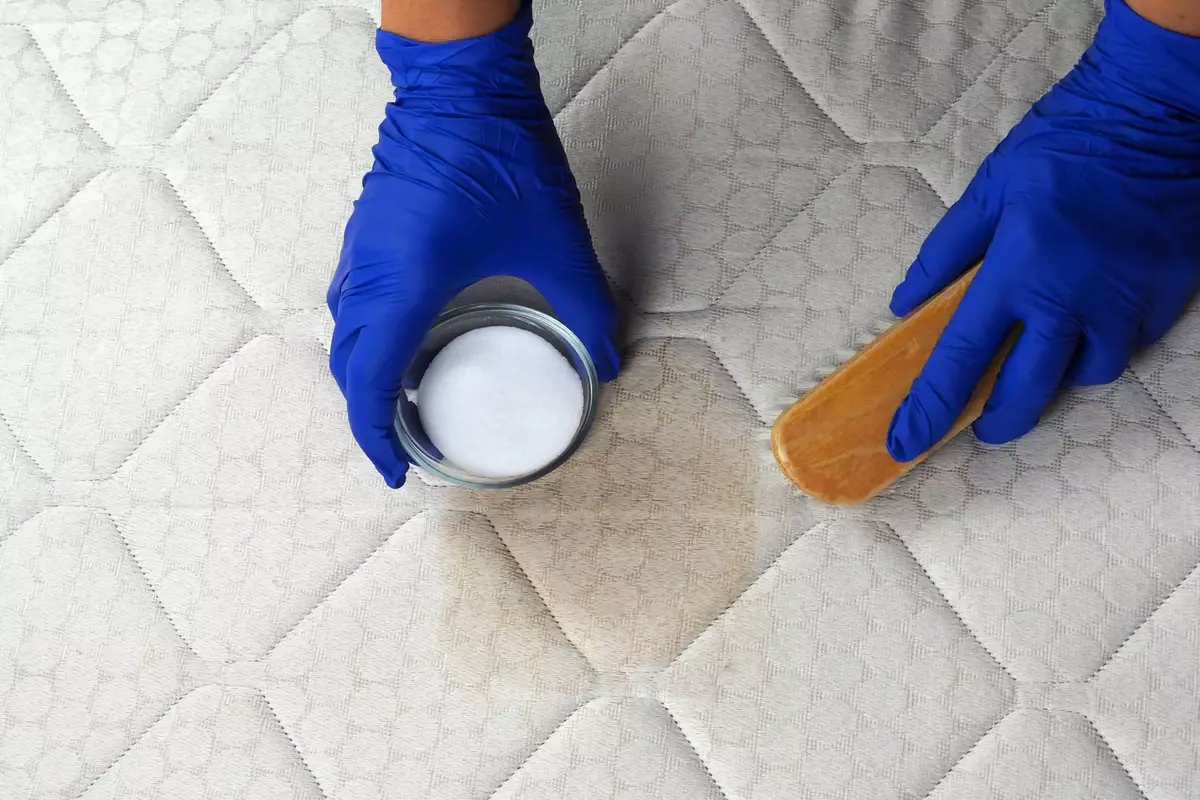
Sprinkle a generous amount of baking soda over the mattress surface. Let it sit for several hours or overnight to absorb odours. For an added fresh scent, mix a few drops of essential oils (like lavender or eucalyptus) with baking soda before sprinkling it on the mattress. Vacuum thoroughly to remove the baking soda.
If possible, place the mattress in direct sunlight for a few hours to help kill bacteria and mould spores.
Steam cleaning can be highly effective for deep cleaning mattresses. The high temperature of the steam helps kill bacteria, dust mites, and other allergens. However, be cautious with the amount of moisture applied to avoid mould growth. Steam cleaners can often be rented from hardware stores or cleaning supply companies.
When cleaning your mattress, there are some common pitfalls that can actually cause more harm than good. Here’s what to watch out for:
Over-saturating the mattress with cleaning solutions
Mattresses are thick and not designed to dry quickly. Over-saturating them with cleaning solutions can lead to trapped moisture, which fosters mould and mildew growth.
Use cleaning solutions sparingly. Instead of pouring or spraying large amounts of liquid, dampen a cloth with the solution and dab it on the stain. Always follow up with a dry cloth to blot up any excess moisture.
Not allowing enough drying time
If a mattress isn’t given sufficient time to dry completely, it can retain moisture, leading to unpleasant smells, bacteria growth, and potential mould issues.
Clean your mattress early in the day on a warm, sunny day. Use fans to circulate air and help speed up the drying process. Always ensure the mattress is completely dry before putting any bedding back on it.
Using harsh chemicals that can damage the mattress fabric and materials
Harsh chemicals can degrade the fabric and materials of your mattress, reducing its lifespan and potentially releasing harmful fumes.
Stick to mild cleaning solutions like dish soap, vinegar, and baking soda. If you must use a stronger cleaner, make sure it’s designed for use on mattresses and follow the instructions carefully.
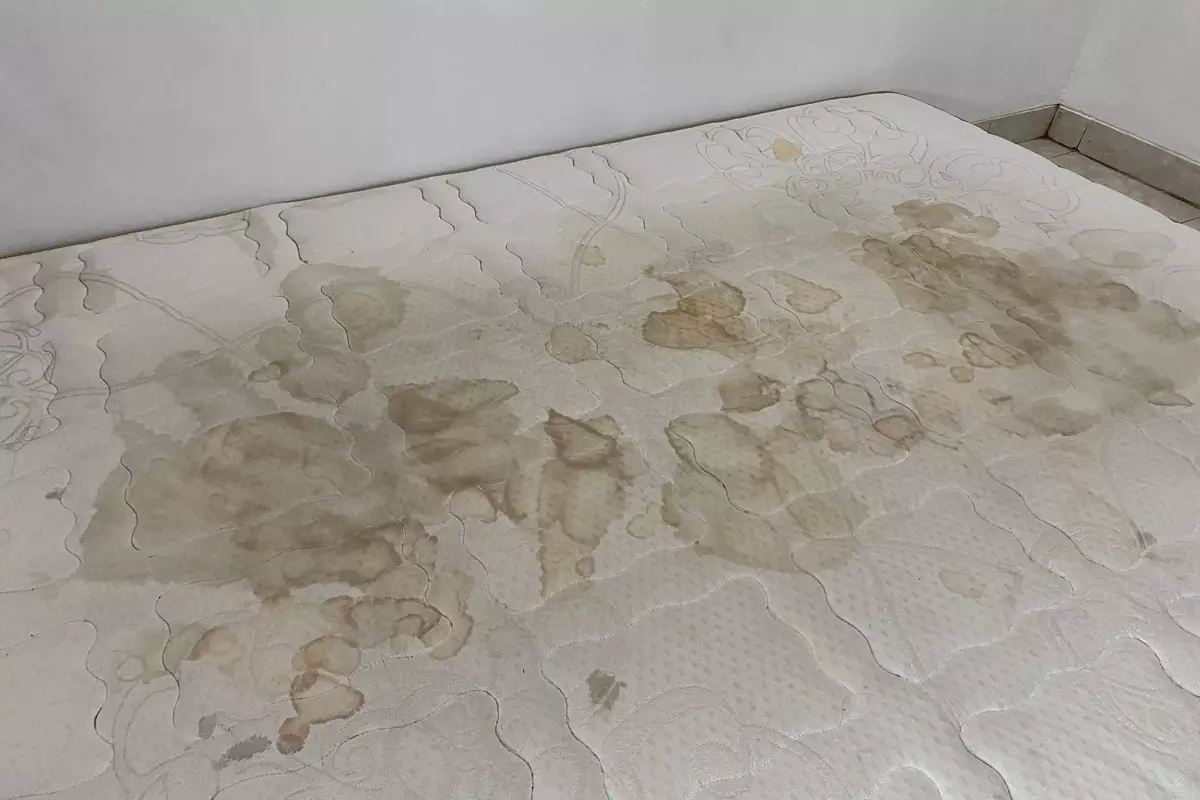
Different types of mattresses require specific techniques for effective stain and smell removal. Here's how to handle common issues for each type:
Innerspring mattresses, which contain coils or springs, need careful handling to avoid rusting the internal components.
For stain removal: Instead of a heavy-duty stain remover, you can use a mild dish soap solution to treat stains. Apply the solution with a cloth and dab gently. Avoid soaking the mattress to prevent rusting the springs.
For odour elimination: Sprinkle baking soda over the mattress and let it sit for several hours before vacuuming. For persistent odours, repeat the process or use a mattress deodoriser.
Memory foam is highly absorbent, so it's crucial to use minimal liquid when cleaning. Here’s how to restore a memory foam mattress.
For stain removal: Create a solution of mild dish soap and water. Apply with a cloth and dab gently. Avoid over-wetting the mattress to prevent moisture retention, which can lead to mould.
For odour elimination: Sprinkle a generous amount of baking soda over the mattress and let it sit for several hours or overnight. Vacuum thoroughly to remove the baking soda. Adding a few drops of essential oils to the baking soda can help add a fresh scent.
Latex mattresses are naturally resistant to dust mites and mould but still need proper care to handle stains and smells.
For stain removal: Use a mild soap and water solution for spot cleaning. Apply with a cloth, gently dab the stain, and ensure the area dries completely to prevent moisture damage.
For odour elimination: Deodorise with baking soda. Sprinkle it over the mattress, let it sit for several hours, and vacuum thoroughly. Avoid direct sunlight as it can degrade the latex.
Hybrid mattresses combine innerspring coils with memory foam or latex, so you'll need to consider both components when cleaning.
For stain removal: Treat stains with a mild dish soap solution. For memory foam or latex sections, apply the solution sparingly and dab gently.
For odour elimination: Use baking soda to eliminate odours. Sprinkle it across the mattress, let it sit for several hours, and vacuum thoroughly. Ensure both the innerspring and foam/latex components are fully dry.
Pillow top mattresses have an additional layer of padding that requires gentle cleaning to maintain its plush feel.
For stain removal: Use a mild soap solution and apply it gently with a cloth. Dab the stains carefully without saturating the pillow top layer.
For odour elimination: To remove odours, sprinkle baking soda on the mattress and let it sit for several hours. Vacuum thoroughly to ensure all baking soda is removed. You can also use a fabric spray designed for upholstery for added freshness.
There you have it! With these heavy-duty cleaning solutions, you can give your mattress a fighting chance. If these methods don’t do the trick, it might be time to consider replacing your mattress (don’t forget to buy a mattress protector to go with it). Remember, WM Waste offers mattress removal and recycling to help you dispose of it responsibly. Happy cleaning and sweet dreams!
© 2024 WM Waste Management Services | All Rights Reserved